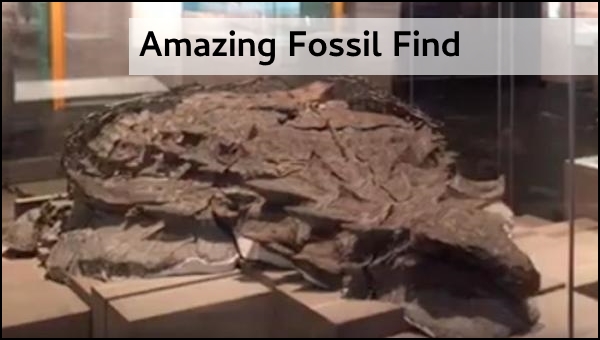By Tyson Thorne

Back when I led tours at the Museum of Nature and Science for BC Tours there were a few facts we liked to stress. The first was that it was okay to question what you saw and read; those dinosaurs with the feathers and colorful skin tones are more art than fact since skin doesn’t fossilize. A close second is that fossils do not require millions of years to make. Of course the museum employees hated us. After doing tours for several years I learned from a museum insider that the reservation desk would warn the other employees when we would be coming in so they could avoid a confrontation.
Before continuing we need to go over a little science. I promise it will be quick and painless, so don’t skip ahead. Still with me? Okay, there are many different kinds of fossils and in the museum and they are usually of two types. Many are impression fossils. Picture a sea shell making an impression of its shape and contours in a muddy bank. A stone forms in the muddy mold so that later we can see what the shell looked like. Plant stems and tree limbs are common impression fossils, as are trilobites and dinosaur footprints.
As multitudinous as impression fossils are, the bulk of fossils on display are replacement fossils. When you look at dinosaur bones they aren’t really bones, they are rocks in the shape of the bones that once existed. Once an animal dies, is buried and decomposes so that only the bones are left, dirt packs in around those bones holding them in the earth. Water penetrates the earth and erodes the bone, leaving behind minerals in its place. The minerals eventually replace the bone, which is why we call it a replacement fossil.
In a mine deep in Alberta, Canada a one and a quarter ton fossil was found. Looking more like a statue than a fossil, it is made from the impression of the body of a Nodosaur and is the complete upper three-quarters of the body. Fossilized remnants of skin cover the armor plates across the dinosaur’s skull. So detailed is the impression that one can count the scales on its soles of its feet. Caleb Brown, , grins at my astonishment. “We don’t just have a skeleton,” said Caleb Brown, a postdoctoral researcher at the museum, “We have a dinosaur as it would have been.”
Interestingly, there are still no colors indicated by the fossil, or impressions of feathers.
But what a find. So much can be determined from this stony replica. That it is entirely reptile-like rather than bird-like is obvious, but perhaps more interesting is the texture of its skin, the shape of its armored head and back,the smoothness of its underbelly – all missing pieces of the Nodosaur puzzle. Interestingly, researchers try to sell us – erm, tell us – the story of his death. They claim he was drinking by a stream when a flood swept him up took him out to sea where he died, sank to the bottom and was eventually covered by silt and sand and stone. The story aligns with the establishment line regarding fossils taking millions of years to make, and is complete poppycock.
Researchers cannot say with any level of certainty what the animal was doing before it died. It surely was not swept out to sea or its carcass would have bloated and risen to the surface where it would have been eaten and decomposed. It is true that a flood likely caused it’s death, as the fossil was found in sedimentary rock, but it would have to have been rapidly buried and fossilized in order to have such a detailed specimen. Like fossils, the stories from evolutionists never change.
|
|
